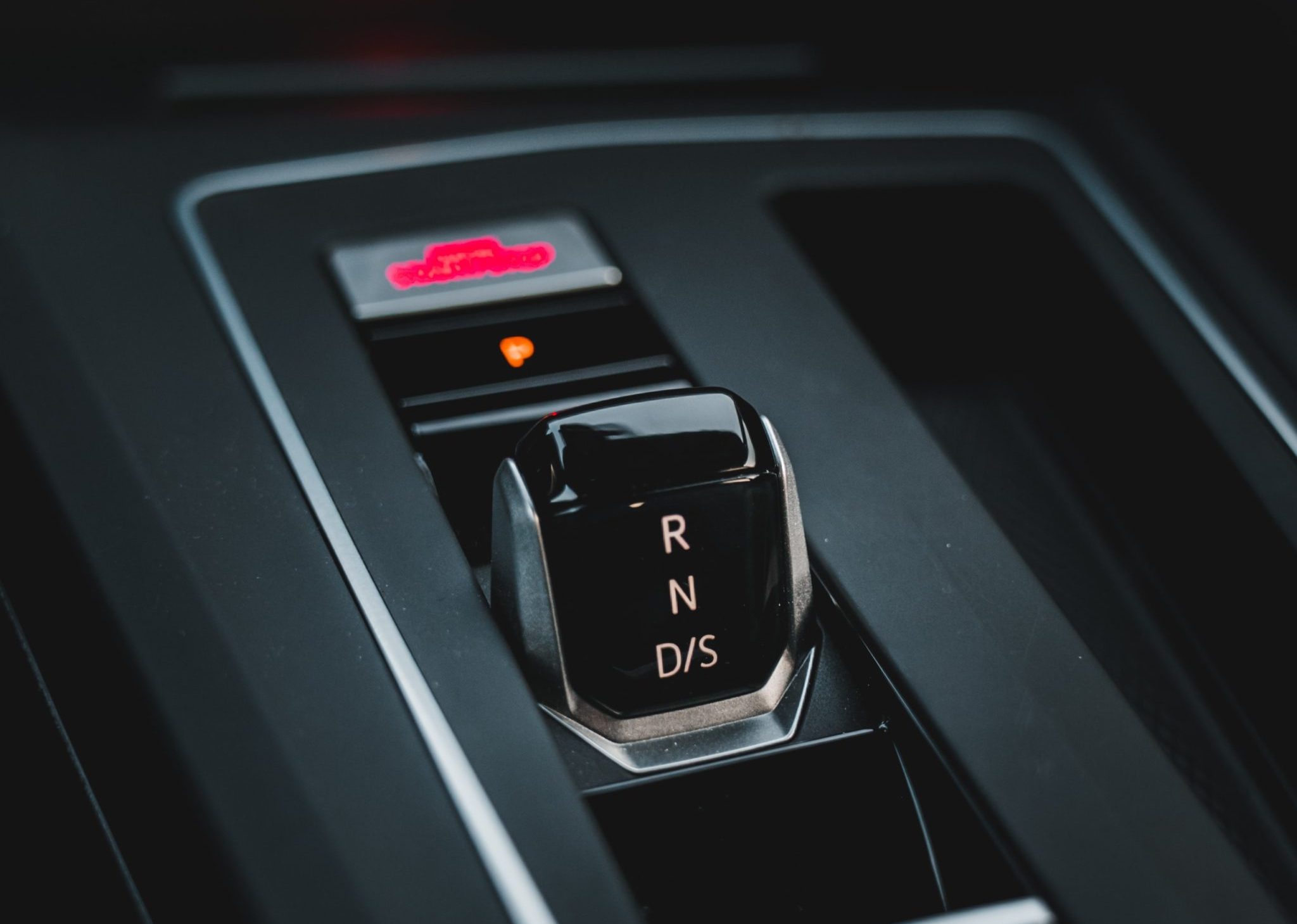In this article, we explain the most common VW 1.8 TSI engine problems and explore some simple solutions.
The four-cylinder VW 1.8 TSI sits as one of Volkswagen’s most well-respected engines. As part of the EA888 family, it was first engineered in 2007 by Audi and has now made its way into a host of other car manufacturers’ vehicles ever since.
Volkswagen’s EA888 engine has seen significant refinements over the years and comes in both 1.8 and 2.0-litre flavours. Drivers particularly enjoy that these petrol engines reach peak power output only a couple of hundred RPMs after reaching peak torque. This means efficiency and speed go hand-in-hand with owners having no complaints about the engine’s performance.

So far there have been 3 generations of the EA888 with the third generation of the 1.8 TSI engine taking the crown as the best VW option on the market.
Despite this glowing reputation, there are VW 1.8 TSI engine problems across all 3 generations. Some are more serious than others which existing and prospective owners should be aware of. Gen 2 is considered the most inferior of the range, suffering from a significant oil leak problem that has tarnished the EA888’s reputation ever since.
Below we’ll discuss the main features of the VW 1.8 TSI to get acquainted with it before diving into the main problems of the engine including symptoms and fixes.

Engine features of the VW 1.8 TSI – EA888
While there’s plenty to love about the EA888, some of the most significant features include:
Multi-point direct fuel injection
Used to improve fuel efficiency, the third generation of the 1.8 TSI features multi-point fuel injection. This technology allows an exact quantity of fuel to be injected into each cylinder just at the right time. The benefit of this is more direct power when you need it without excessive fuel consumption.
Water-cooled exhaust manifold
In the EA888, the exhaust manifold is integrated into the engine’s cylinder head. This means VWs with the 1.8 TSI engine can use water cooling to lower the temperature of exhaust gases, reducing overall wear on the engine.
See How We Can Help You Secure Your Dream Car…
- We’ll Find the BEST Deal for You
- 100% FREE and No Commitment
- Super QUICK Decision
- We’re With You From Application to Picking Up the Keys
Representative APR of 19.8%


This also has the added effect of improving cold starts and allows the cabin to warm up a lot quicker. As well as this, the EA888 can use a leaner air to fuel mixture, further improving mileage.
Turbocharged
All three generations of the 1.8 TSI are turbocharged with the first and second featuring a KKK K03 turbocharger with an upper-limit boost pressure of 0.6 bar. The third generation went with the IS12 turbo with multiple GTI owners claiming to output 300hp without issue.

Which VW Cars have the 1.8 TSI EA888 Engine?
The VW 1.8 TSI engine has been a mainstay of Volkswagen’s lineup since its launch. The models you can find it in 10 models including:
1. VW Jetta Mk5/Sagitar (2006-2011)
2. VW Jetta Mk6 (2010-2018)
3. VW Jetta Mk7 GLI (2018+)
4. VW Passat B6/B7/B8 (2005+)
5. VW Passat CC (2008+)
6. VW Golf GTI Mk5 (2006-2010)
7. VW Golf GTI Mk6 (2009-2014)
8. VW Golf GTI Mk7 (2014-2020)
9. VW Golf R (2014+)
10. Tiguan (2016+)

Common VW 1.8 TSI engine problems
While drivers have no issue with the VW EA888 1.8 TSI performance and efficiency, it is not considered among the most reliable engines available. There are several notable problems with the EA888 with some considered irreparable and others considered more minor.
Oil Depletion
Affecting the second generation of the EA888 in particular, the engine suffers a reputation as an oil guzzler. The problem appears relatively early into the engine’s life and is by far the biggest complaint that owners have regarding both the 1.8 and 2.0-litre variants of the EA888.
Are you Ready Yet? Secure Your Dream Car Now
- We’ll Secure the Finance AND Help Find the Car
- 100% FREE and No Commitment
- Super QUICK Decision
- We helped 500,000+ Customers Last Year
Representative APR of 19.8%


The main culprit is the thin piston rings featured in Gen 2 models that, fortunately, can be replaced if necessary.
Symptoms: Aside from low oil readings, you will notice oil appearing on the engine and the spark plugs. The also may be blasts of blue smoke from the exhaust.
Solution: While it’s by no means an “easy” fix, replacing the pistons and piston rings in the engine is regarded as the best fix. Most owners go for piston parts from Gen 1 engines which tend to have less trouble with oil consumption.
For the DIY mechanics reading, get your required parts from DIY Car Service Parts. Simply enter your registration to get suitable part recommendations for your specific car make & model.

Water Pump Failure
Not just a problem for the VW 1.8 TSI, water pump failures are a common issue for all vehicles. Nevertheless, the VWs with the EA888 tend to find the plastic compressor wheel fails almost every 20,000 miles on their water pump making it a fairly regular problem.
Symptoms: One of the earliest signs is a high-pitched whine coming from the engine block area. This will be followed by your engine temperature gauge climbing higher and the car’s warning light turning on. You will also notice coolant leaking under your vehicle.
Soulution: A new water pump needs to be installed if you notice these symptoms. This is a repair that can be conducted yourself if you feel comfortable but any garage will be able to conduct this repair job if not.
Ignition Coil Failure
A slightly less common problem that the engine has is ignition coil failures. The ignition coil is used to convert electrical energy from the car’s battery into an ignitable form that allows combustion to occur within the engine.
Symptoms: The main symptom of a faulty ignition coil is your vehicle will simply not start or misfires upon turning the key. Cars with a more modern dash might show a specific warning on the onboard computer or your check engine light will flash. Early signs include a rough turbo at high RPMs as well as at idle. Your engine may also stall irregularly.
Solution: It can be difficult to tell the difference between a faulty ignition coil and failed spark plugs so an expert diagnosis may be needed. In either case, a diagnosis and replacement parts are needed.

Thermostat Housing Leaking
Something that affects Gen 3 models more than previous versions of the EA888 is the thermostat housing leaks engine coolant. This part regulates the flow of coolant depending on the internal temperature of the engine but has been reported to leak regularly by owners.
Symptoms: As with other issues related to engine coolant, you will notice engine temperatures sitting higher than normal. Your engine may eventually overheat entirely and shut down if the problem goes unchecked.
You should look out for leaking coolant within the engine compartment and under the vehicle, as well as low coolant lights.
Solution: If you find the thermostat is the cause of the leak it’s important to replace it promptly. This is not a difficult fix and can be undertaken by those comfortable repairing their own vehicles.
As this involves the engine of the car, however, it’s important the job is done correctly with pressure tests undertaken after work is completed. Professional work is therefore recommended in most cases.

Timing Chain Stretch
In Gen 1 and Gen 2 models of the EA888, an issue was identified where the timing chain becomes stretched. The timing chain is an essential transmission component and a stretched one will result in engine failures, errors, and poor performance.
Most owners begin to notice problems after 70,000 miles and the problem is associated with pushing the engine harder than normal for longer periods of time such as daily motorway/freeway driving.
Symptoms: You will likely see a check engine light once the problem has become bad enough to notice. A OBD-II scanner will help you diagnose the issue when your check engine light comes on. You can pick one up for as little as £25. We have put together a list of The 4 Best OBD-II Scanners for 2023 to help you decide which one best fits your needs. One potential issue is that the chain may be skipping excessively as a result of the improper tension. You may also notice small pieces of metal in the oil pan beneath the engine with your vehicle experiencing a rough idle.
If the problem is not caught early, your vehicle will not start at all and could be potentially dangerous if it breaks during high-speed driving.
Solution: This is not an easy fix and should be left to VW engine specialists. Replacing a timing chain is also an expensive job and as it can cost multiple thousands to fix is sometimes the reason for owners selling their vehicles.

Carbon-clogged Intake Valves
While not just a problem for the VW 1.8 TSI, this engine is particularly prone to carbon build-up in its intake valves. Carbon build-up is a natural consequence of fuel combustion with deposits coating the intake valves over time. The EA888 has a reputation for carbon clogging the intake valves more regularly than other engines, however, and owners should take precautions against it.
Symptoms: You may notice a significant loss in fuel economy and engine performance if enough carbon builds up within the intake valves. If the issue becomes bad enough you will experience misfires, stalling, and engine knocking.
Solution: Prevention is the best cure in this case with owners often taking the car into the fast lane of a motorway to “blast” away from the carbon build-up by driving at high RPMs for 20 minutes or more. If carbon build-up is already a problem it can be cleaned manually or by taking to any mechanic who can thoroughly clear out the intake valve blockages.
Air Oil Separator Valve Issues
The Air Oil Separator (also known as the Positive Crankcase Ventilator) allows your vehicle to control the flow of its emissions, routing gases into the engine to be safely burned away.
The EA888 has multiple reports of this part failing however and is often due to failures in the inner workings of the valve such as the rubber diaphragm and springs no longer functioning correctly.
Symptoms: There can be multiple issues with this valve with the most common symptoms involving misfiring and excessive oil consumption. It’s important to get a proper diagnosis at a garage, however, as these are also symptoms of other problems with the VW 1.8 TSI meaning a misdiagnosis is possible.
Solution: Replacement of the PCV is something some owners choose to do themselves. The part is relatively inexpensive but can be tricky to fit if you’ve never done it before. It’s recommended for most people to leave this one to a trained mechanic or engine specialist unless you are experienced with replacing such parts.

Is the VW 1.8 TSI EA888 engine reliable?
Despite its reputation, most owners consider the engine to be fairly reliable with well-cared for EA888 engines lasting between 150,000 and 200,000 miles and more.
The engine’s reputation as unreliable largely stems from the Gen 2 models of the VW 1.8 TSI which suffered more extensively from the excessive oil consumption issue. This issue was widespread enough that the entire EA888 range garnered an “unreliable” reputation.
Alongside the timing chain issues, carbon buildup, and leaky parts, the engine’s reputation as unreliable is perhaps not entirely unjustified.
Nevertheless, with an enormous amount of EA888 engines on the road powering fairly powerful cars, it is fair to say the engine is still largely reliable, especially if you have a Gen 3 model. Aside from Gen 2 issues, however, EA888s suffer about the same amount of failures as other engine ranges.
VW 1.8 TSI Maintenance
The best way to look after your 1.8 TSI involves regular oil and filter changes. While your manual will state you should do this once every 10,000 or so miles, most owners have found it necessary to do so every 5-6000 to prevent excessive wear and tear on the inner workings of the engine and keep things running smoothly.
These more regular oil and filter changes are the common denominator amongst owners of cars with the EA888 that are still serviceable beyond 100,000 miles.
You should also include as part of your maintenance routine a check of your spark plugs every 20,000 miles with a multimeter to check they can fire as well as a thorough air intake valve clean to remove carbon buildup every 50-60,000 miles.

1.8 TSI Vs 1.5 TSI
- Displacement: The 1.5 TSI has a smaller displacement of 1.5 liters compared to the 1.8 TSI, which has a displacement of 1.8 liters. This means that the 1.8 TSI may provide more power and torque than the 1.5 TSI, but may also be less fuel-efficient.
- Turbocharging: Both engines feature turbocharging technology, which can improve power and efficiency. However, the 1.8 TSI produces more boost pressure, resulting in higher performance.
- Transmission: The 1.5 TSI is often paired with a six-speed manual or seven-speed dual-clutch automatic transmission, while the 1.8 TSI is usually mated to a six-speed manual or six-speed automatic transmission. This can affect the driving experience and responsiveness of the engine.
- Applications: The 1.5 TSI is commonly used in smaller Volkswagen models such as the Golf, while the 1.8 TSI is often found in larger vehicles like the Passat or Tiguan. The specific application of each engine can affect its performance and capabilities.
In summary, the 1.5 TSI and 1.8 TSI engines are both popular options that offer different features and benefits. While the 1.8 TSI may provide more power and torque, the 1.5 TSI is often more fuel-efficient and may be better suited for smaller vehicles or everyday driving. Ultimately, the choice between these engines will depend on your specific needs and preferences.
Frequently Asked Questions
What type of oil should I use with the 1.8 TSI EA888?
Most VW 1.8 TSI engines will require 5W-40 or 5W-30 synthetic oil. Different vehicles will have their own recommendation, however, so it’s important to check your car’s manual. There you can also find out the oil capacity with and without the filter.
Are TSI 1.8 EA888 engines still being made?
Yes, the EA888 is still being manufactured with Volkswagen continuing to optimize the engine.
Did you Know? The latest iteration is known amongst enthusiasts as the Evo4 and will power the 2022 Golf GTI and Golf R.
Conclusion
We hope you have found this article on VW 1.8 TSI engine problems useful.
If you are currently having issues with your vehicle an On-board Diagnostic (OBD) scanner will help you diagnose the issue for as little as £25. We have put together a list of The 4 Best OBD-II Scanners for 2023 to help you decide which one best fits your needs.
If you have suffered your own issues with this powerplant please leave us a comment below. Happy driving!



